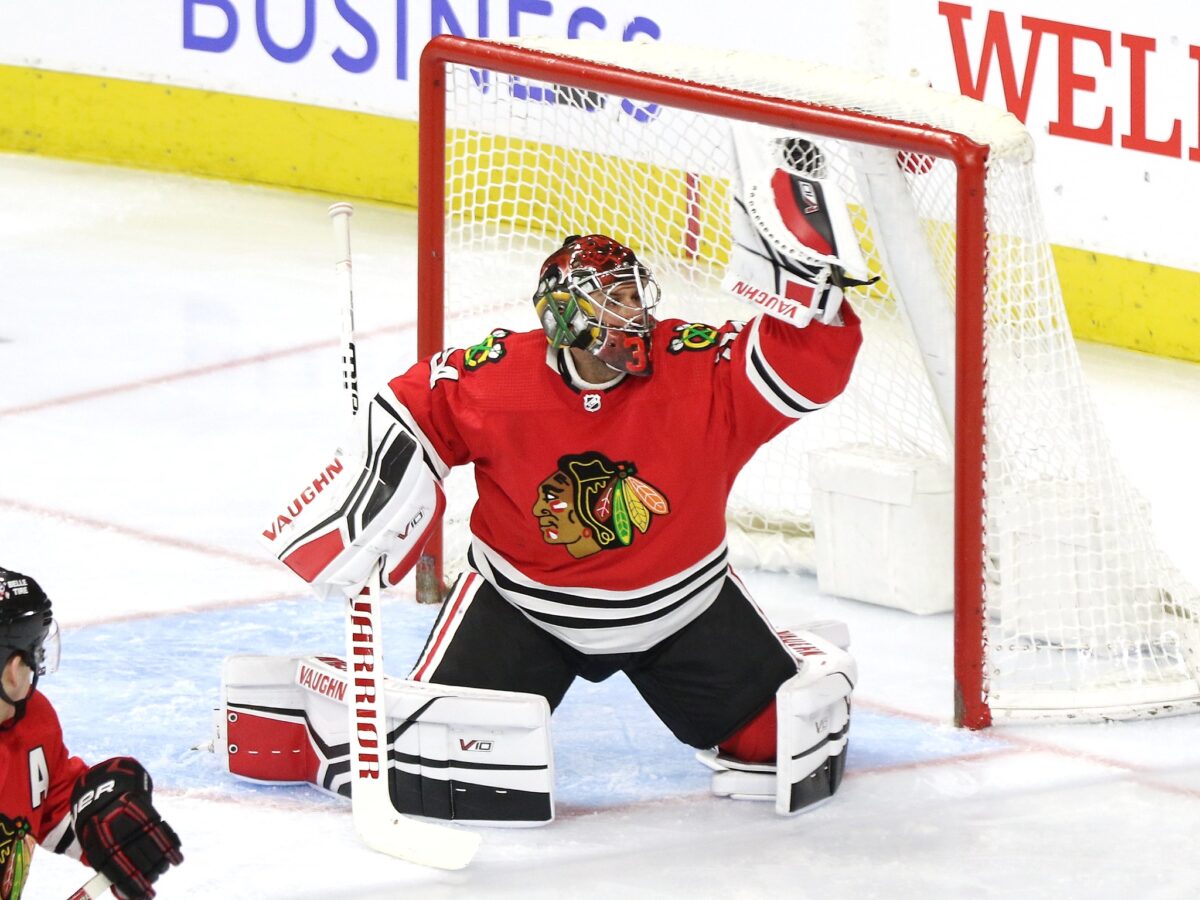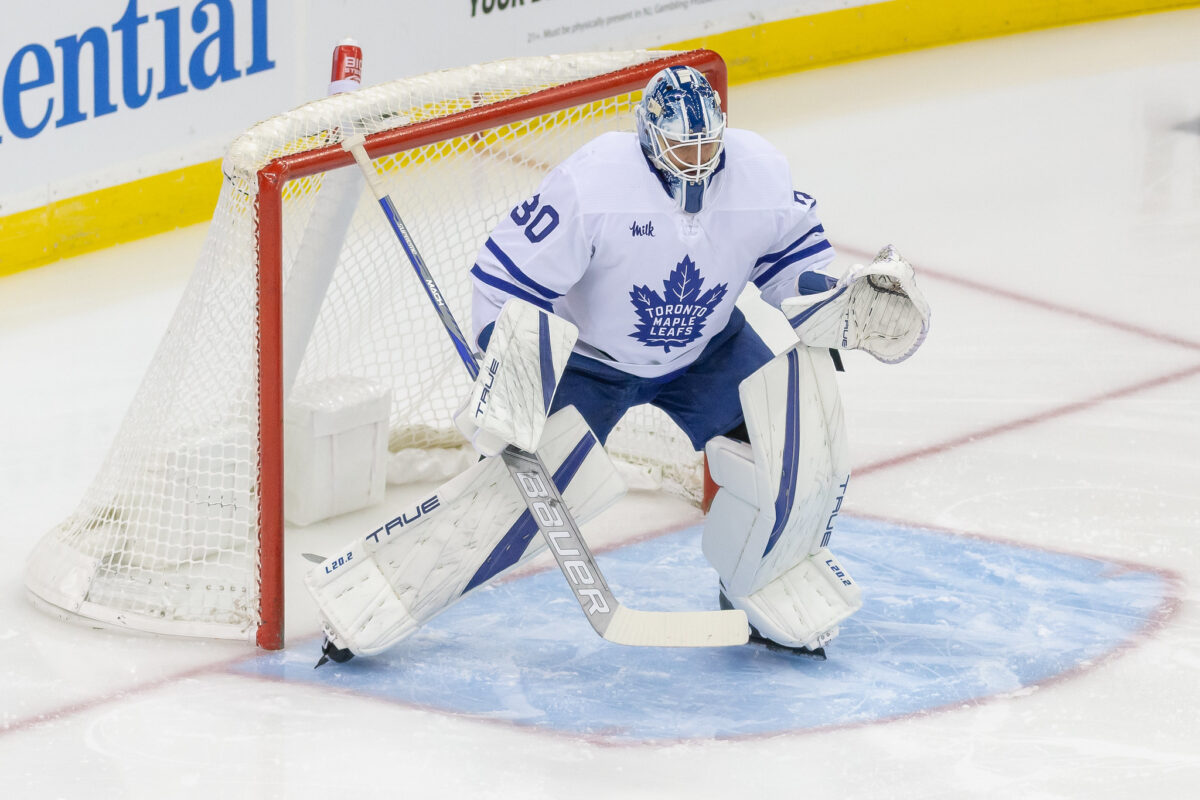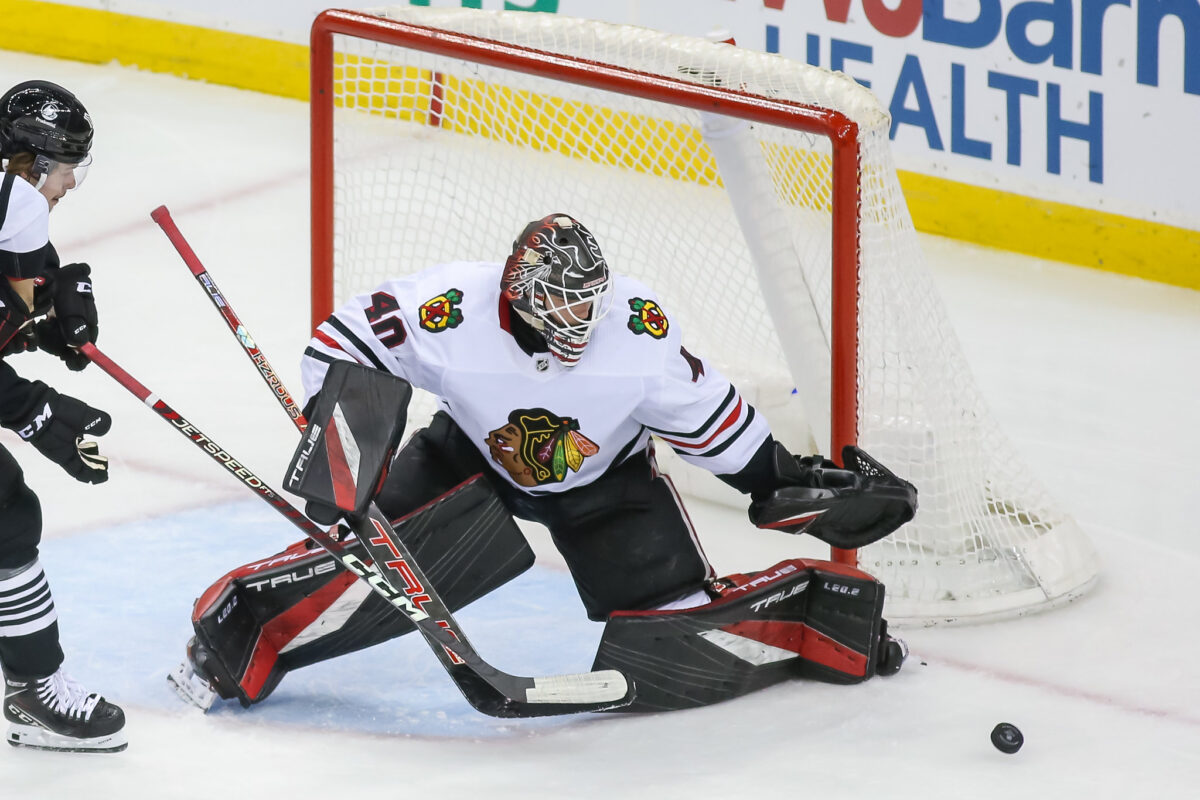The Chicago Blackhawks’ roster is “very close to being done,” according to general manager Kyle Davidson. Training camp will provide more tweaks to the roster, but goaltending is one part that seems set in stone. They are going into the season with Petr Mrazek as their number one and Arvid Söderblom as the backup after parting ways with Alex Stalock. Davidson mentioned he was comfortable going into the season with them. It allows Drew Commesso and Jaxson Stauber to continue developing with the Rockford IceHogs of the American Hockey League (AHL), gives Söderblom a bigger look at the NHL level, and space for 2023 second-round draft pick Adam Gajan to get premium playing time at the University of Minnesota-Duluth.
Going into the season with Mrazek and Söderblom is justifiable, as the team continues to stress growth and development, but questions linger.
Should the Blackhawks Add a Third Goaltender?
One of the debates surrounding the Blackhawks’ goaltending is whether they should add another goaltender. Again, they are looking for development next season, so adding another goaltender would not be for the sake of getting better. The reason to add another one would be for insurance, which might be something to consider before the season starts.
Mrazek has dealt with injuries throughout his career, and he struggled throughout last season with groin strains three different times. The most NHL games he has played in a season is 54, which was back in 2015-16 with the Detroit Red Wings. Last season with the Blackhawks, he played in 39 games. So, Mrazek’s injury history is a concern. Söderblom also had a groin injury last season that caused him to miss over three weeks with the Rockford IceHogs. Furthermore, he played in 15 games with the Blackhawks last season, posting a 2-10-2 record with a 3.45 goals-against average (GAA) and a .894 save percentage (SV%).

Stalock also dealt with injuries that led to a goalie carousel throughout the season. The Blackhawks were on their fifth-string goalie in their first 12 games. Injuries happen in the NHL, but it may be wise to add depth because of the team’s unlucky streak.
It’s a solid argument to say the Blackhawks don’t need a goaltender. Worst comes to worst, they’ll look to Rockford if necessary, but sometimes in the NHL, moves are not made because of “needs” but because they “make sense.” The team did not need to trade for Corey Perry as they had already acquired veteran leadership with Nick Foligno and Taylor Hall. Still, the organization thought acquiring him made sense in helping build a winning culture. The same thought process would apply to goaltending.
If a situation arises that makes sense for the team, they should explore it. Elliotte Friedman reported that Chicago was interested in trading for goaltender Cal Petersen as the Los Angeles Kings were looking for a way to unload his $15 million contract. He ended up getting moved in a three-way trade to the Philadelphia Flyers on June 6, and the Kings had to part with defenseman Sean Walker, a 2024 second-round draft pick and prospect, to make it work. If it means gaining assets, the Hawks will always consider taking on a bad contract. It didn’t work out with Petersen, but it may work elsewhere.
Related: Grading Blockbuster 3-Team Trade Involving Flyers’ Provorov
One option that our other Blackhawks’ writer, Michael Wagner, brought up is that the Toronto Maple Leafs need to shed goaltender Matt Murray’s contract ($6.25 million average annual value – AAV). He is only under contract until the end of next season, and the Leafs are $8 million over the salary cap. If they’re desperate enough to move him, Toronto will part with something significant. In the Blackhawks’ case, they could acquire Murray, keep him in Rockford (if he clears waivers) to help mentor the young goaltenders, and could be recalled when needed.

Murray has struggled with injuries the past few years, but the Blackhawks wouldn’t rely heavily on him. And, if they can get a future asset, like a roster player or prospect, that would make sense. Davidson mentioned that their goal is to find as many NHL players as possible and see where they fit in as they develop, as not all draft picks are slated to make it to the NHL. They could also carry him as a third goaltender if they felt strongly about it.
Can Söderblom Become Blackhawks’ Number One Goalie?
With the Blackhawks goalie tandem, I believe there is potential for rookie Söderblom to overtake Mrazek. That may be a bold statement as he has only played in 18 career NHL games, and to climb up the ladder, he needs a significant amount of playing time. I don’t believe that is out of the question since the team wants to see what they have in him and wants him to prove he belongs with them in the future. This season is the perfect opportunity to do so while they are still not expected to be a playoff team. It is something to watch for, as it could be a repeating storyline from last season. Mrazek was expected to be the team’s number-one goalie, but Stalock, when healthy, became their clear go-to throughout the year. Söderblom could force Mrazek’s hand similarly if he plays well.

Mrazek could rebound from a 10-22-3 record with a 3.66 GAA and a .894 SV%, but there will be some competition as both have something to prove. It’s performance-related at the end of the day. Even throughout the league, we saw how Minnesota Wild rookie Filip Gustavsson overtook future Hall of Fame goaltender Marc-Andre Fleury’s number-one spot during the regular season and playoffs. Mrazek’s number one job seems secure for now but not iron-clad.
Related: Chicago Blackhawks’ 2022-23 Player Grades: Goalies
Overall, if the Blackhawks decide to stand pat with their goaltending, which seems likely, it wouldn’t necessarily be bad, as those two should be enough to get by. If 23-year-old Söderblom takes a big leap, that would be even better, as he has already shown flashes of potential. However, considering their interest in Petersen, even if it was solely to gain assets, the point is acquiring a goaltender crossed their minds before. It isn’t too far-fetched to think they would entertain the idea again if an opportunity arose and benefited their future. Although they have already hit the salary cap floor and likely are less demanding to take on more money, the flexibility of their remaining $17 million in cap space gives them options to keep on the back burner.
